After a couple of days lounging lakeside in Nkhata Bay, Malawi, we were feeling pretty relaxed. Relaxation: we’re not good at it, which is one reason why we decided to head straight for Mozambique on public transport. And that’s what this post is about: how to travel by road from Malawi to Mozambique.
There are six land border-crossings between Malawi and Mozambique: we used the one at Chiponde (Malawi) to Mandimba (Mozambique). Crossing there brings you into far northern Mozambique. If you’re planning to explore in the north, the Chiponde/Mandimba crossing is the obvious entry point to catch the twice-weekly train that runs from Cuamba to Nampula. From Nampula you can easily travel on to Ilha de Mocambique, or to Pemba and out to the Quirimbas Archipelago. There’s also information in this post about taking the train from Cuamba to Nampula.
Before You Go
The Route
Nkhata Bay to Lilongwe/Mangochi
Mangochi (Malawi) to Cuamba (Mozambique)
Taking the Train from Cuamba to Nampula
Onward Travel: Ilha de Mocambique
Before you go
Most nationalities need a visa for Mozambique, and they are officially available on arrival at ‘most’ land border crossings. I couldn’t find an actual list anywhere of which borders ‘most’ actually means. Our local Embassy strongly recommended bringing the visa from home (or picking it up in a neighboring country) to ‘avoid problems at the border’. Bring your Yellow Fever vaccination certificate.
There are plenty of unofficial money-changers hanging around at the border on both sides, with bad rates. On Malawi’s side the closest ATM is in Mangochi and on Mozambique’s side, Cuamba (not sure about Mandimba).
The route
It takes two days to get from Nkhata Bay (Malawi) to Cuamba (Mozambique). Remember, all times are approximate and you may have to wait for a vehicle to fill up. Expect delays along the way like interminable police checks and so on.
In this post I’ll outline each step as we took it but if you want to break it up, you can stay the night anywhere along the way:
Day 1. Leave Nkhata Bay very early for Mzuzu, about 45 minutes by taxi. Get a bus to Lilongwe. It’s about a four hour trip. Take a minibus to Mangochi, another almost five hours, and sleep there.
Day 2. Leave Mangochi early by share-taxi to the Immigration office in Chiponde, about an hour. Take a moto across the border to Mandimba, stopping at Mozambique’s Immigration office on the way. You need a bike, it’s about 7 kilometers altogether. In Mandimba, get a chapa (minibus) to Cuamba, a 3 hour trip.
The train from Cuamba to Nampula departs at 5 am on Thursdays and Sundays, and is a full day’s trip. Unless you really want to linger in Cuamba, keep that in mind.
Here are a few other things to keep in mind: in Malawi we found buses were optimistically scheduled but rarely left on time. Don’t plan on getting online much if you don’t have a local sim card. Including the long-haul buses, taxis and minibuses, hotels and food, we spent 40-50 USD each per day – costs go up noticeably in Mozambique, and we picked better places to sleep, plus decent coffee and wine. English, prevalent in Malawi, almost disappears when you cross the border.
Nkhata Bay to Lilongwe/Mangochi
Ideally, book your bus ticket to Lilongwe at least a day ahead. You have to go to the bus company’s office in Mzuzu and do that in person. We didn’t. It was a gamble but we showed up at the Sososo bus office an hour early and literally got two last-minute no-show spaces on the bus. Most buses generally leave by 7 am.
To arrive early enough in the morning book a private taxi from your guesthouse in Nkhata Bay straight to the bus office in Mzuzu, 45 minutes. There is nothing much around in the way of food so don’t get your heart set on breakfast. It’s about 4 hours to Lilongwe, where you get off at City Mall and can take a taxi to ‘the depot’ (the station for local transport, minibuses and so on). Find a minibus to Mangochi, another 5 hours away (the minibus stops in Monkey Bay on the way, if you want to break your trip up there).
In Mangochi we walked to Fort Johnston Lodge. The restaurant there is pretty decent. The rooms are very basic. Security is tight…at least, the night guard takes his job seriously: we awoke to find him standing on a chair in the hallway peeping in the window over our door. There is no WiFi. There are ATMs in town and an astonishing amount of bicycles (bodabodas) – that seems to go for any town in Malawi actually.
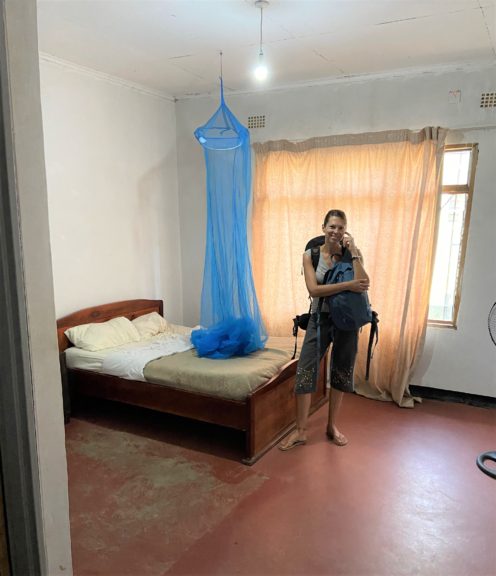
Mangochi (Malawi) to Cuamba (Mozambique)
Walk out of town over the bridge and straight up to where you see the cars gathering. Try to be there by 6 am (less waiting time). Get a share-taxi (so, 12 passengers in 7 seats) to Chiponde. The taxis stop right next to Immigration, where you can go inside to stamp out of Malawi, and get chased by swarms of moto-drivers and money-changers.
The two countries’ border posts are about a kilometer apart. From the Mozambique post, it’s another 6 km to Mandimba, the first town. Moto-drivers will offer to take you from Chiponde to Mandimba, stopping and waiting for you to process immigration in Mozambique on the way. Negiotiate your price, and make sure it’s clear that you expect to go all the way to Mandimba. Watch out as they might tell you the Mozambique border post actually is Mandimba, and try to ditch you there. It’s not. Insist on going the rest of the way to town after you process Mozambique Immigration.
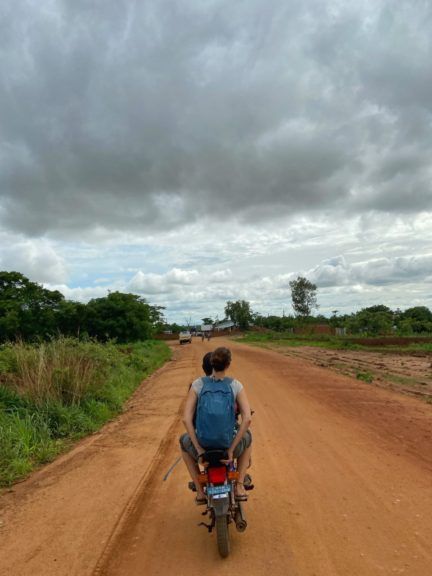
Chapas accumulate in the road going out of Mandimba. It takes about 3 hours to Cuamba. The road is in pretty rough condition but it’s just such a beautiful scenic route it really doesn’t matter.
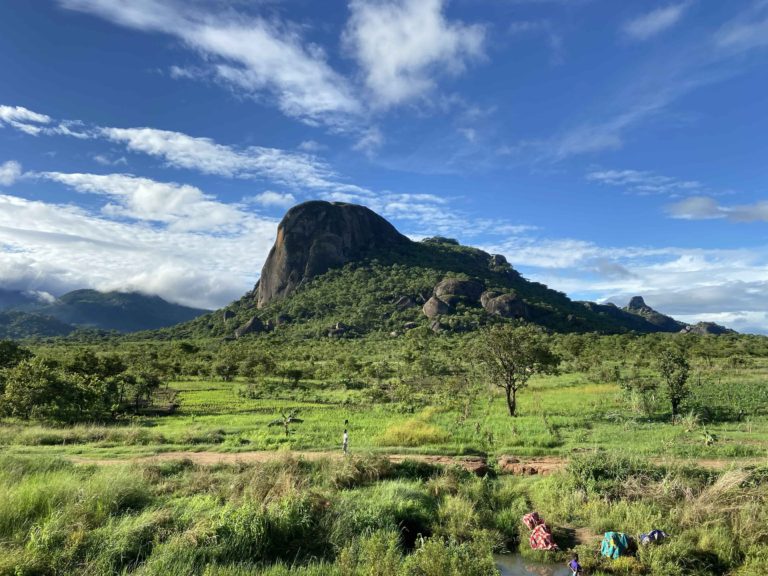
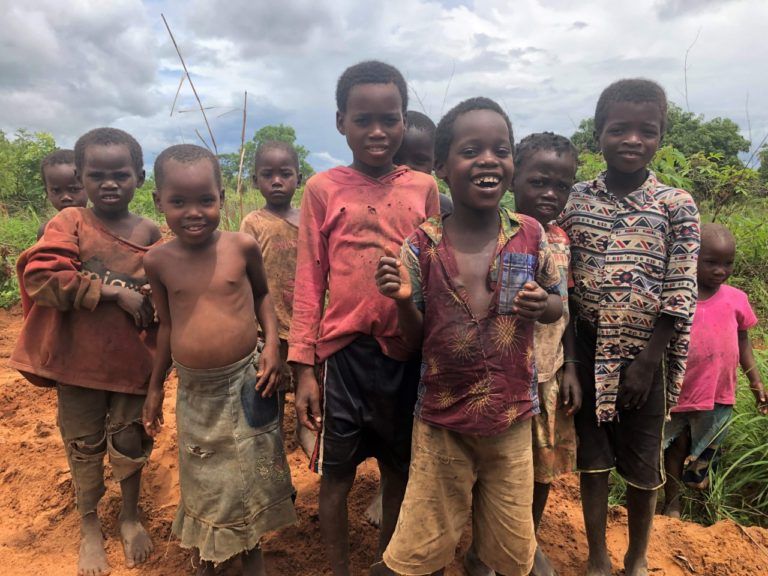
There are a couple of pensions in Cuamba which are really dismal (and expensive considering how depressing they are) so we opted to just pay some more and stayed at the former Castel Hotel – now called Vision. It’s nice, has decent food, and WiFi which was ‘not working’. There are plenty of ATMs in Cuamba, and not much of anything else.
But, you’re on the road in beautiful Mozambique! Bem vindo:)
Taking the train from Cuamba to Nampula
The twice-weekly train that runs from Cuamba to Nampula is an experience in itself and probably a better means of travel between those two cities, than going by road. Nampula is your gateway to Ilha de Mocambique, or to Pemba and out to the Quirimbas Archipelago.
The train departs Cuamba at 5 am on Thursdays and Sundays, and is a 10 hour trip (give or take). Get to town the night before, and buy your ticket from the window at the train station. I believe you can also buy it on the morning of departure, assuming there is space and you want to queue up in a pushy crowd even earlier. It’s very cheap: approximately 10 USD for Executive Class and around 3 USD for Second Class. I am no stranger to overcrowded vehicles and absurd levels of discomfort – and even I would still recommend going Executive Class (but don’t get your hopes up. It is by no means anything like what its name suggests).
In the morning, arrive at the station by 4 am. The crowd is huge and you want to be close to the front. When the guards open the gates for boarding it’s a free-for-all. Executive is easier to board – if you find scrambling around in long wet grass beside the tracks and then hauling yourself up a rusty ladder in total darkness into a vestibule that reeks of urine, easy. Second Class is about the same, but with a better chance of being crushed to death.
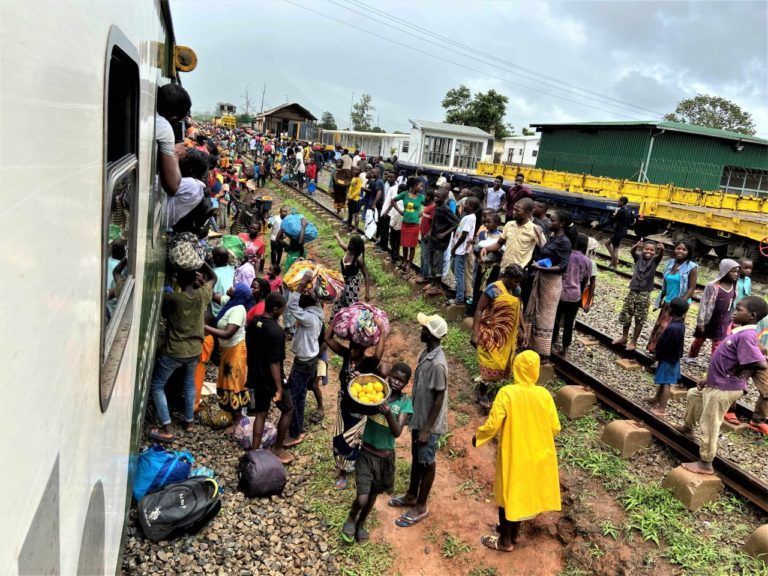
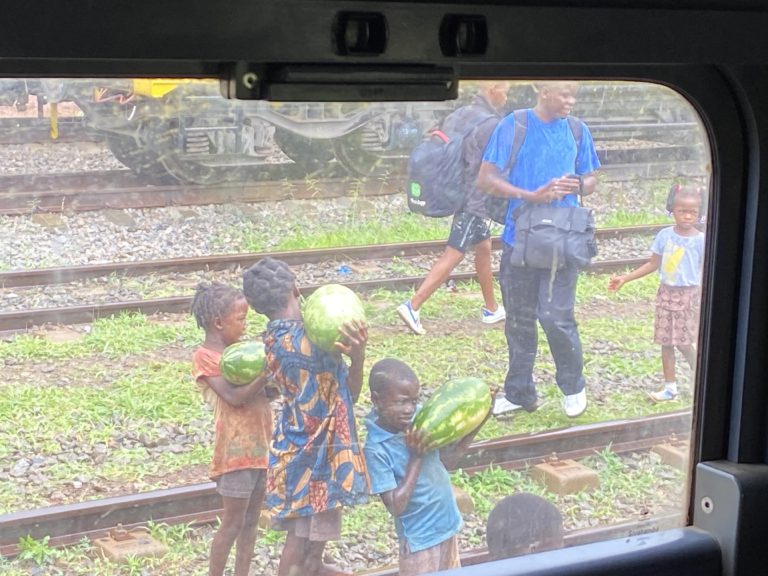
There’s no food available onboard. Vendors rush the train at every stop: you need small/exact change to buy food – fast – out the window. Be persistent: the locals are clearly grocery shopping and there aren’t enough vendors, so buying food is a competitive sport on this train. Oyv tried to get us two bananas for breakfast, but the conductor beat him to it and bought the whole stalk.
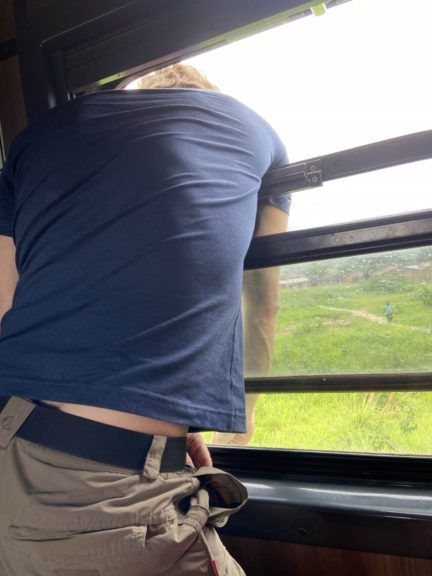
In Nampula, we stayed at Ruby Backpackers which is a quick walk from the station and a really cosy spot.
Onward travel: Ilha de Mozambique
From Nampula we set off for Ilha de Mocambique. I’ll be adding a post with the details about how we got there and what we did, as soon as I get around to writing it:) In the meantime, I’ve written a story about it: Fears, Phobias and Mozambique, Finally
Read more
For more about travelling in these two countries and things to see and do while you’re at it, check out my stories from Malawi and Mozambique. And, if you’re in Tanzania trying to figure out your next move you might want to read From Tanzania to Malawi: How to Get Around Lake Malawi by Road




This Post Has 4 Comments
Thanks for this Post. Very well detailed and wonderful.
Myself planning on that leg of Trip Mid next year.
You’re welcome:) It’s a fun trip – enjoy!
Planning a solo trip this July and this piece has been so resourceful. It left me questioning myself if I really want to o through this haaha
Haahaha! I know the feeling:) Glad this was helpful, and, have a great time!!